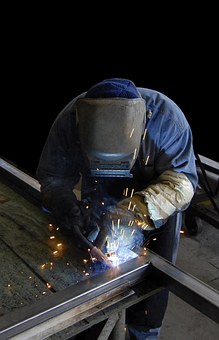Work Hardening with Stainless Steel
 In this process, the deformation method is used to make the metal stronger and sturdier. The stainless steel fabrication Wodonga has the capacity to harden more quickly than the others. The hardening rate varies from alloy to alloy. The stainless steel is hardened with a temperature alteration technique called cold working. In this process the temperature is lowered as the name indicates and a cold environment is created. This cold work hardening changes the qualities of the stainless steel make it tensile to 2000 MPa. Therefore, it can be reduced to the size of the fine wires. The hardness also depends upon the size of the steel piece and its thickness. The hardening renders plenty of benefits that are related to stainless steel. It creates the alloys that are highly effective in the projects that require extreme strength and resistance, especially from corrosion. With this technique the right type of stainless steel is created that is often used in making tools, cutlery, valves and the bearings. Work hardening also multiplies the magnetism of the stainless steel.
In this process, the deformation method is used to make the metal stronger and sturdier. The stainless steel fabrication Wodonga has the capacity to harden more quickly than the others. The hardening rate varies from alloy to alloy. The stainless steel is hardened with a temperature alteration technique called cold working. In this process the temperature is lowered as the name indicates and a cold environment is created. This cold work hardening changes the qualities of the stainless steel make it tensile to 2000 MPa. Therefore, it can be reduced to the size of the fine wires. The hardness also depends upon the size of the steel piece and its thickness. The hardening renders plenty of benefits that are related to stainless steel. It creates the alloys that are highly effective in the projects that require extreme strength and resistance, especially from corrosion. With this technique the right type of stainless steel is created that is often used in making tools, cutlery, valves and the bearings. Work hardening also multiplies the magnetism of the stainless steel.
Machining Stainless Steel
Machining is recommended for many purposes but still it is essential to keep in mind that it is not easy to perform due to the possible chances of chipping. In the successful administration of the process the coolant and lubricants are added to the required equipment. The heat can be removed by using large sized tools. In some projects the chances of chipping are reduced by introducing the chip breaker.
Welding Stainless Steel
It is even possible to weld the different types of steels. The degree of efficiency determines how each of these can be welded together. The austenitic steel is highly recommended for the welding. In case of thick alternatives the product can suffer from sensitizing. Those using the martensitic grades prefer wedding for this type. They have to be extremely careful as it can get cracked at some point. For better welding results with least damage the martensitic structural steel Melbourne is prior to and after the process. The austenitic filler rods can also reduce the chances of damage after welding the martensitic steel. Welding is not recommended for the ferritic stainless steel. It is possible because they are less ductile and highly prone to sensitization.
